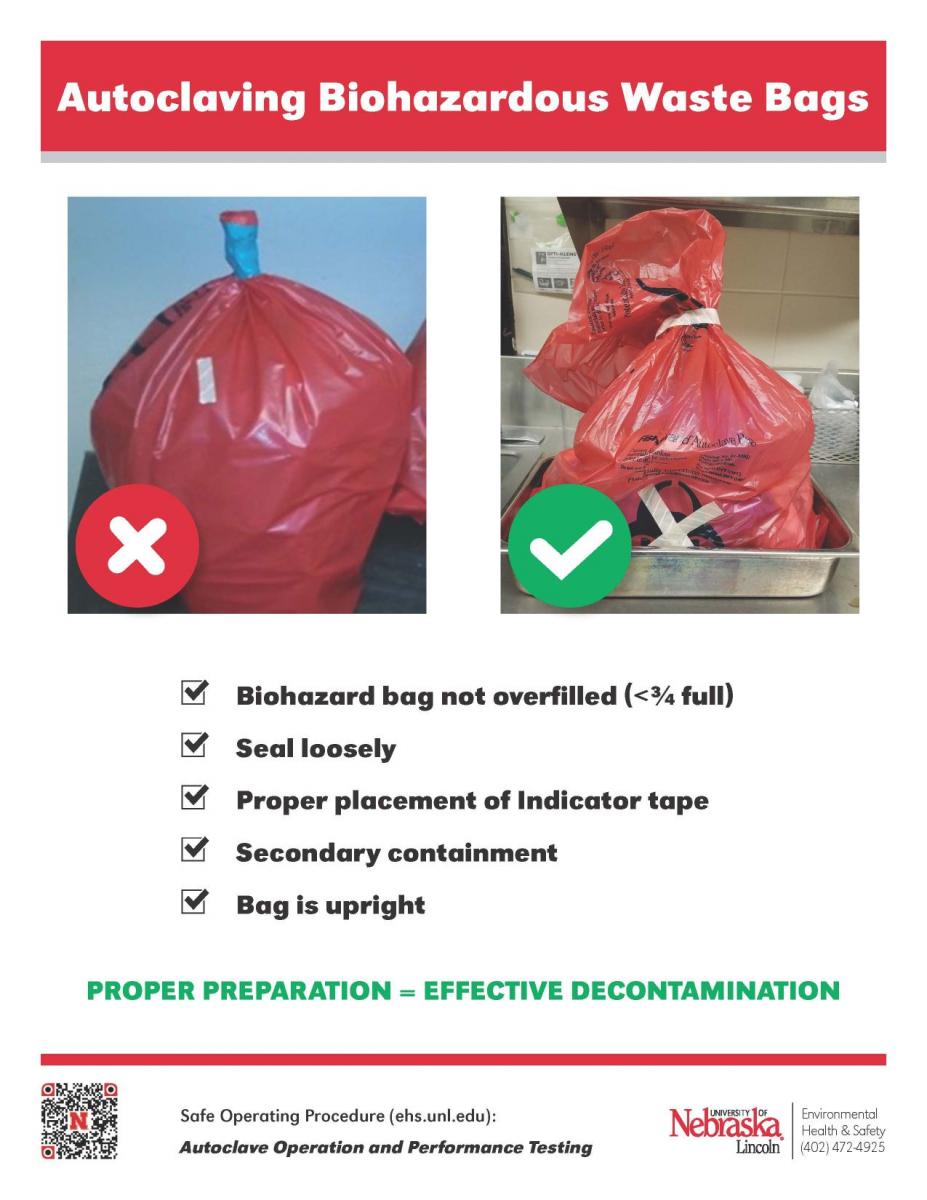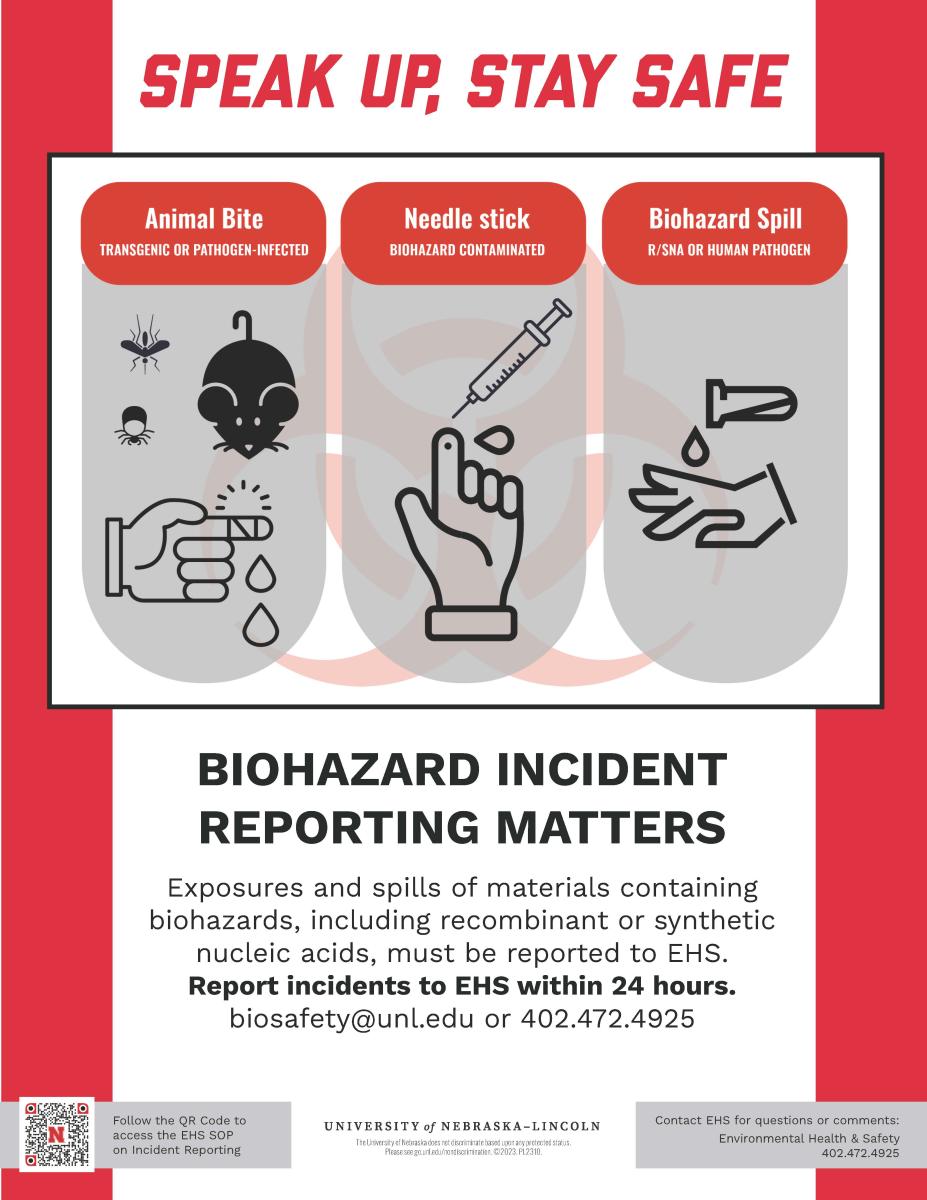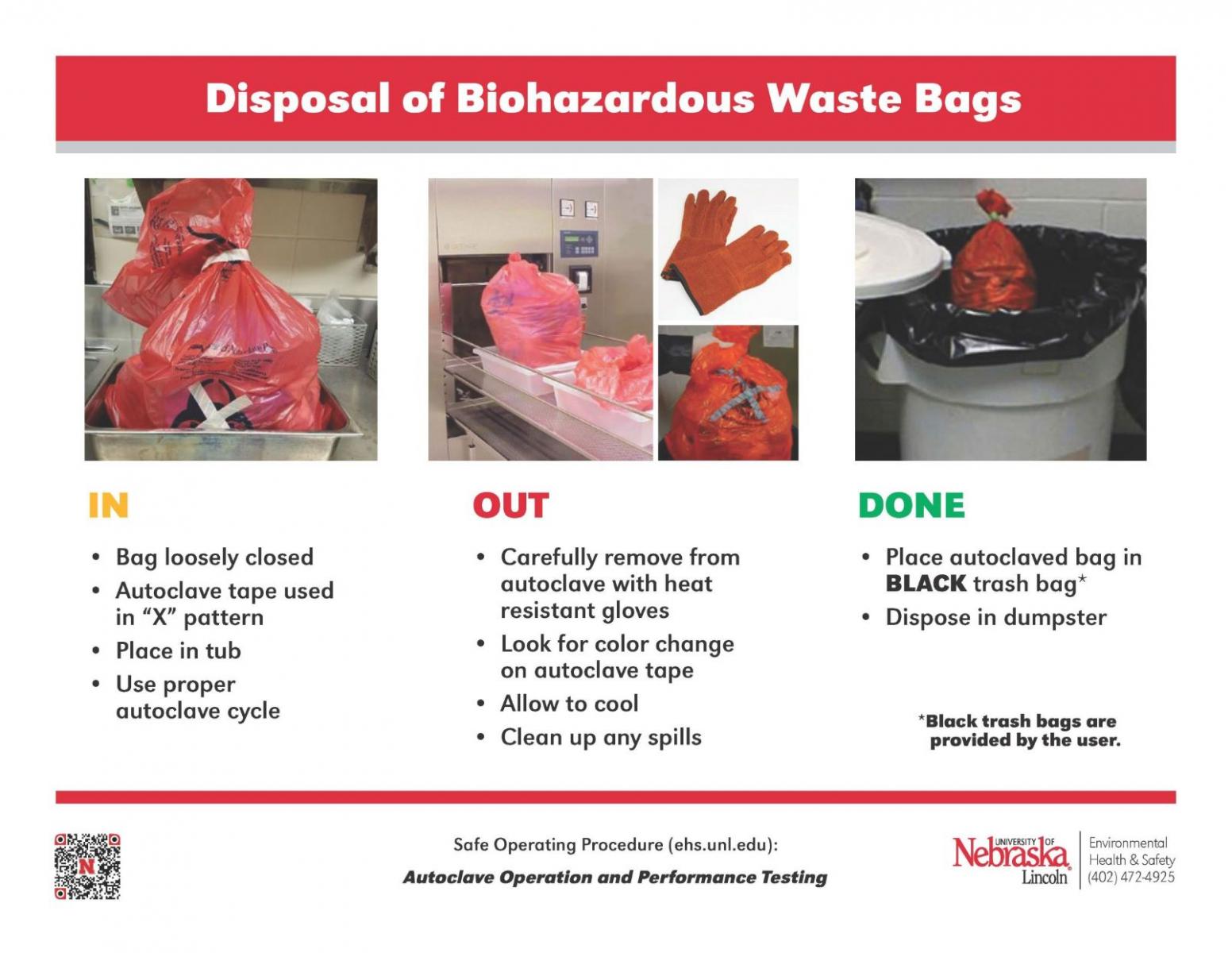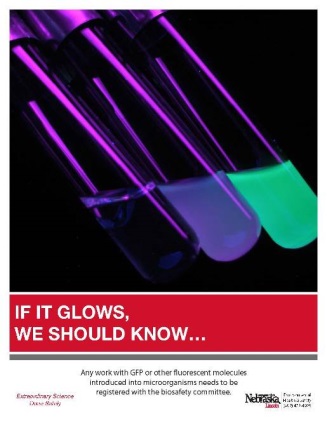
|
Title: Autoclaving Biohazardous Waste Bags
|

|
Title: Biohazard Incident Reporting MattersText: Exposures and spills of materials containing biohazards, including recombinant or synthetic nucleic acids, must be reported to EHS. Reporting incidents to EHS within 24 hours. biosafety@unl.edu or 402.472.4925
|

|
Title: EHS Biosafety ProgramText: What's in your freezer?
|

|
Title: Disposal of Biohazardous Waste BagsIN
OUT
DONE
*Black trash bags are provided by user |

|
Title: Fluorescent MaterialsText: IF IT GLOWS, WE SHOULD KNOW... Any work with GFP or other fluorescent molecules introduced into microorganisms needs to be registered with the biosafety committee |